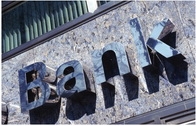Advertisement
FDIC-Insured Institutions Earn $26.3 Billion in Q4

Commercial banks and savings institutions insured by the Federal Deposit Insurance Corporation (FDIC) reported an aggregate profit of $26.3 billion in the fourth quarter of 2011, a $4.9 billion improvement from the $21.4 billion in net income the industry reported in the fourth quarter of 2010. This is the 10th consecutive quarter that earnings have registered a year-over-year increase. As has been the case in each of the past nine quarters, lower provisions for loan losses were responsible for most of the year-over-year improvement in earnings.
"2011 represented the second full year of improving performance by the banking system," said FDIC Acting Chairman Martin J. Gruenberg. "Banks reported higher positive aggregate earnings, the numbers of 'problem' banks and failures declined, and loan balances increased in the final three quarters of the year."
A majority of all institutions (63 percent) reported improvements in their quarterly net income from a year ago. Also, the share of institutions reporting net losses for the quarter fell to 18.9 percent from 27.1 percent a year earlier. The average return on assets (ROA), a basic yardstick of profitability, rose to 0.76 percent from 0.64 percent a year ago.
Fourth-quarter loss provisions totaled $19.5 billion, about 40 percent less than the $32.7 billion that insured institutions set aside for losses in the fourth quarter of 2010. Net operating revenue (net interest income plus total noninterest income) was $3.8 billion (2.3 percent) lower than a year earlier, due to a $4.4 billion (7.4 percent) decline in non-interest income.
Asset quality indicators continued to improve as insured banks and thrifts charged off $25.4 billion in uncollectible loans during the quarter, down $17.1 billion (40.2 percent) from a year earlier. Noncurrent loans and leases (those 90 days or more past due or in nonaccrual status) fell for a seventh quarter, but the percentage of loans and leases that were noncurrent remained higher than in previous crises.
Financial results for the fourth quarter of 2011 and the full year are contained in the FDIC's latest Quarterly Banking Profile. Also among the findings:
►Growth in loan portfolios continued: Loan balances posted a quarterly increase for the third quarter in a row. Total loans and leases increased by $130.1 billion (1.8 percent), as loans to commercial and industrial borrowers increased by $62.8 billion, residential mortgage loan balances rose by $26.0 billion, and credit card balances grew by $21.3 billion.
►Money continued to flow into insured deposit accounts: Deposits in domestic offices increased by $249.7 billion (2.9 percent) during the quarter. More than three-quarters of this increase ($191.2 billion or 76.6 percent) consisted of balances in large noninterest-bearing transaction accounts that have temporary unlimited deposit insurance coverage. The 10 largest insured banks accounted for 73.6 percent ($140.7 billion) of the growth in these balances.
►The number of institutions on the FDIC's "Problem List" fell for the third quarter in a row: The number of "problem" institutions declined from 844 to 813. This is the smallest number of "problem" banks since first quarter of 2010. Total assets of "problem" institutions declined from $339 billion to $319 billion. Eighteen insured institutions failed during the fourth quarter. For all of 2011, there were 92 insured institution failures, compared with 157 failures in 2010.
►The Deposit Insurance Fund (DIF) balance continued to increase: The unaudited DIF balance—the net worth of the fund—rose to $9.2 billion at Dec. 31 from $7.8 billion at Sept. 30. Assessment revenue and fewer expected bank failures continued to drive growth in the fund balance. The contingent loss reserve, which covers the costs of expected failures, fell from $7.2 billion to $6.5 billion during the quarter. Estimated insured deposits grew 3.1 percent in the fourth quarter.
"The industry is now in a much better position to support the economy through expanded lending," said Acting Chairman Gruenberg. "However, levels of troubled assets and 'problem' banks are still high. And while the economy is showing signs of improvement, downside risks remain a concern."
About the author




